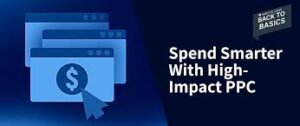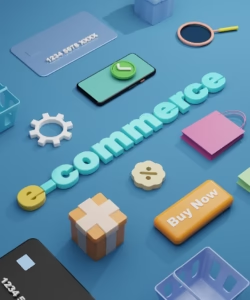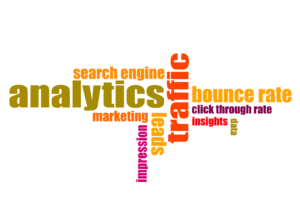A lot of small firms have tight budgets. Marketing for these businesses can be a money-swapping exercise. Social media marketing, though, is changing this. It is making it possible for companies of all sizes to use a smaller marketing spend to reach a large audience.
A sizable portion of your audience, regardless of your sector, uses social media. 54% of social media users use those sites to investigate products, according to data from GlobalWebIndex.
According to a poll, 68% of American adults are on Facebook, whereas 78% of those between the ages of 18 and 24 use Instagram. These figures are the reason why companies are using social media to promote their goods and services. But how can you differentiate your marketing efforts given that nearly every other company is using this platform?
The following nine social media tips can help you outperform the competition in terms of social media engagement:
Use visual to tell your story
Visuals are essential for social media growth hacking since they promote interaction with the intended audience. Compared to simple text, they draw in your audience’s attention more. People enjoy stories in general, but they enjoy them even more when they are presented visually. This explains why users interact with visual content on social media more frequently than textual content.
Visuals can be used in a variety of ways on social media. Content can be repurposed into infographics, compelling calls to action, or entertaining content like GIFs and memes. Adding images to your content not only increases its shareability but also increases social media engagement with your existing clientele. By doing this, you can connect with more possible clients.
Use Content to Engage Your Audience
Make content that engages your audience and utilize it to communicate the narrative of your brand. Share information that empowers your audience instead of just marketing your stuff.
If you post too much promotional material, consumers may start to resent your brand. Seeing posts that promote things doesn’t bother people. Sharing this kind of material frequently, though, can alienate your fans from your business.
Customers will get more familiar with your brand if you provide them with content that solves their concerns. Additionally, it will inspire them to tell others about their experiences. Additionally, this will boost social media engagement and cause your content to go viral.
Incorporate “Happiness” in Your Posts
Can you recall the joy you experienced upon seeing pictures of a friend’s wedding or recent newborn on social media? It is not just you who feels this way. Posts on social media that show happy moments are frequently shared by users. Using images, humorous videos, emoticons, or animations can add joy to your posts.
Posts with a high emotional value do, in fact, receive more shares on social media than posts with a lower emotional value. This is due to the fact that happy is the most contagious feeling among people.
Think about letting your fans in on your team’s joyous occasions, much like Zappos does. Social media achievements and your own success stories could also be shared. These will support the development of an emotional bond with your audience.
Go Live More
Approximately 5 billion videos are viewed on YouTube every day. This indicates that video content is preferred by the majority of people. By distributing content in a format that appeals to your fans, you may boost engagement. Think about leveraging live videos to interact with your audience on social media to keep one step ahead of the competition.
These kinds of films have a way of drawing in viewers more so than text or still photos. additionally aid in increasing the visibility of your company on various social media platforms. In actuality, 80% of consumers would rather watch live videos than read blogs from brands they follow. While 82% of people would rather watch videos in real time than read postings on social media.
The most popular platform for live streaming is Facebook Live. When determining your social media marketing plan, you shouldn’t disregard it. Live videos provide your brand a lot of visibility because they appear at the top of news feeds.
You can do a lot of things with live videos. You can demonstrate the operation of a brand-new good or service, present your workspace, or give your audience a peek at your inner workings. Seek inspiration from businesses such as AirBnB and Tastemade.
Be Yourself
You should make an effort to keep your image constant if you want to develop a respected brand. The name, the images, and the color you choose should all stay consistent with your identity.
Your brand voice must be consistent at the same time. It should consistently reflect your personality and values. You can always maintain authenticity, even if you make it smart or authoritative. Would consumers be able to recognize your social media posts if they didn’t include your company name or logo?
Utilize Scheduling Tools for Social Media
The majority of social media tricks are very simple to use and powerful. Only when you consistently provide content and interact with your audience will you be able to fully utilize them. You can easily manage your marketing efforts with social media management tools. You can schedule postings, monitor analytics, and keep tabs on your activity.
In addition, these features help you improve interaction with your fans. This is significant because companies are finding it difficult to live up to the growing expectations of their customers.
When a customer interacts with you on social media, at least 42% of them anticipate hearing back from you within an hour. This demonstrates the rapidly rising expectations of your clientele, which you can only fulfill with the appropriate resources.
You may handle communications from several platforms in one platform with the help of these tools. You’ll save time and avoid the hassle of managing many accounts by doing this. you can choose from a wide variety of social scheduling tools. You have to pay to access the some of them, while some of them are still free.
Instead of Just Making, Curate
Regularly producing content for your social media postings might be a difficult undertaking. Fortunately, it’s not necessary to repeat this step each time.
You can select content that is appropriate for your audience by using content curation. Research indicates that successful marketers employ both original and carefully chosen content. Of the content, 25% is curated and the remaining 65% is created.
When you’re short on time, curating material is a smart method to save time. Content curation offers a simple solution, since producing interesting content is identified by 60% of firms as their biggest difficulty.
It gives your content a new angle, which boosts social media engagement. Additionally, by showcasing market trends, you give your followers something of value. Curating content allows you to move away from product-centric marketing and combine other voices with your own.
Conclusion
Social media marketing has been very popular in the last few years. However, social media is a busy place to sell your goods or services, with over 3.2 billion users worldwide as of right now. However, this shouldn’t demoralize you.
By using the above-discussed social media marketing tips, you may differentiate yourself from the competition and expand your clientele.
GET IN TOUCH
Level up your brand’s social media game with Dgazelle! We’re more than experts—we’re your growth partners. Let’s connect, engage, and get real results together.







